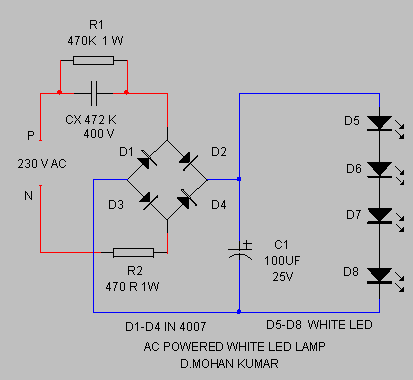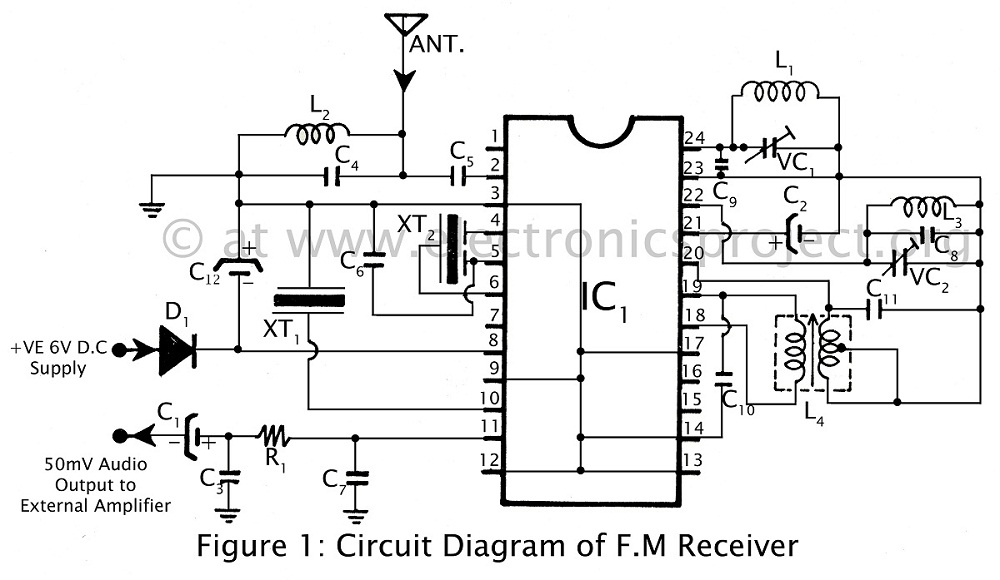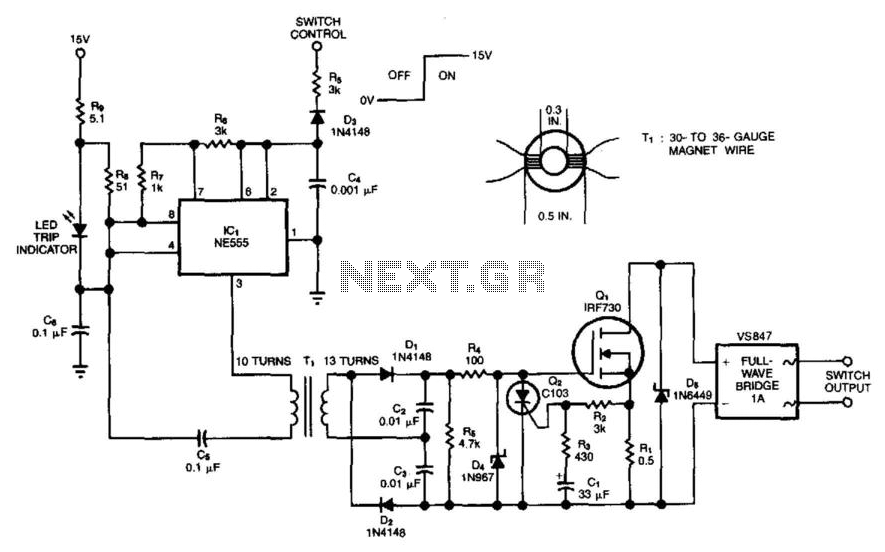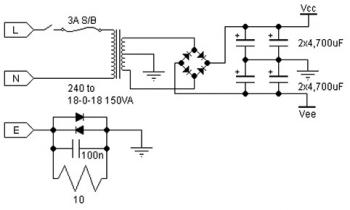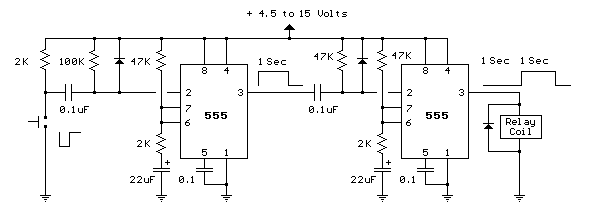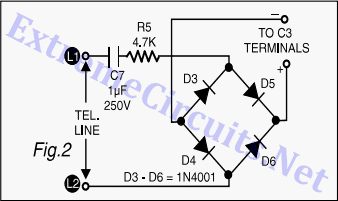
5v 1a power supply using lm2575
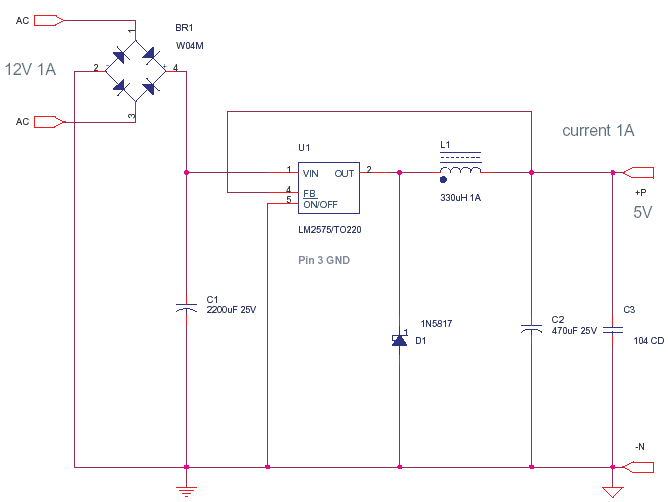
A power transistor with a voltage drop of 4 volts and a current of 3 amps may dissipate approximately 12 watts of heat, presenting a challenge in series regulators. In contrast, a saturated transistor or MOSFET with a voltage drop of 1 volt and the same current will only dissipate 3 watts. However, a fully on transistor or MOSFET cannot be regulated effectively. To achieve regulation, the device is rapidly switched on and off, allowing the appropriate amount of current or voltage to be delivered. This method utilizes Pulse Width Modulation (PWM), where the MOSFET or transistor is toggled at a frequency of around 100 kHz, with the duration of the on phase adjusted to control the output. A longer on duration results in increased energy transfer. Switching losses occur based on the rise and fall times of the pulses. The pulsed AC or chopped DC output can be smoothed to an average value using inductors and capacitors. The reactive pulses from the inductor must be managed by a Schottky rectifier, such as the 1N5817, which is a fast-switching diode rated for 20V and 1A, known for its low switching losses.
In the context of power regulation, the use of PWM is a critical technique that allows for efficient control of power delivery while minimizing heat dissipation. The choice of the transistor or MOSFET is crucial; a device with a lower on-state voltage drop will inherently produce less heat, which is advantageous for thermal management in power applications. When implementing PWM, the frequency and duty cycle are vital parameters. A frequency of 100 kHz is commonly used as it strikes a balance between efficient switching and manageable losses.
The inductors and capacitors used in the smoothing stage play a pivotal role in filtering the output, transforming the pulsed waveform into a more stable DC signal. The inductor stores energy during the on phase and releases it during the off phase, while the capacitor smooths out voltage fluctuations. The integration of a Schottky rectifier like the 1N5817 is essential due to its fast switching characteristics and low forward voltage drop, which minimizes additional losses during the rectification process.
Overall, this combination of PWM control, careful selection of components, and effective filtering techniques enables the design of efficient power regulation systems suitable for various electronic applications.A Power Transistor which is having a drop of 4 Volts across it and passing 3 amps thru it, may dissipate around 12 Watts of Heat, This is the problem in Series Regulators. While a Saturated Transistor or Mosfet with 1 Volts across and 3 Amps Thru will be just 3 Watts. But then a fully on transistor or mosfet cannot be controlled or regulated, for that we turn it ON and OFF very fast so that the right amount of current or voltage is delivered. The way this is done is PWM - Pulse Width Modulation. In this the mosfet or transistor is switched ON-OFF at say 100 kHz, but the ON duration is varied to control the output. The longer the duration of ON time more energy or punch is transferred. Switching losses will be present depending on how fast the rise and fall times of the pulses are. The Pulsed AC or Chopped DC can be smoothed to the Average with Inductors and Capacitors. The reactive pulses of the Inductor has to be absorbed by a Schottky Rectifier 1N5817 - 20V-1A fast switching diode with low switching losses.
🔗 External reference
In the context of power regulation, the use of PWM is a critical technique that allows for efficient control of power delivery while minimizing heat dissipation. The choice of the transistor or MOSFET is crucial; a device with a lower on-state voltage drop will inherently produce less heat, which is advantageous for thermal management in power applications. When implementing PWM, the frequency and duty cycle are vital parameters. A frequency of 100 kHz is commonly used as it strikes a balance between efficient switching and manageable losses.
The inductors and capacitors used in the smoothing stage play a pivotal role in filtering the output, transforming the pulsed waveform into a more stable DC signal. The inductor stores energy during the on phase and releases it during the off phase, while the capacitor smooths out voltage fluctuations. The integration of a Schottky rectifier like the 1N5817 is essential due to its fast switching characteristics and low forward voltage drop, which minimizes additional losses during the rectification process.
Overall, this combination of PWM control, careful selection of components, and effective filtering techniques enables the design of efficient power regulation systems suitable for various electronic applications.A Power Transistor which is having a drop of 4 Volts across it and passing 3 amps thru it, may dissipate around 12 Watts of Heat, This is the problem in Series Regulators. While a Saturated Transistor or Mosfet with 1 Volts across and 3 Amps Thru will be just 3 Watts. But then a fully on transistor or mosfet cannot be controlled or regulated, for that we turn it ON and OFF very fast so that the right amount of current or voltage is delivered. The way this is done is PWM - Pulse Width Modulation. In this the mosfet or transistor is switched ON-OFF at say 100 kHz, but the ON duration is varied to control the output. The longer the duration of ON time more energy or punch is transferred. Switching losses will be present depending on how fast the rise and fall times of the pulses are. The Pulsed AC or Chopped DC can be smoothed to the Average with Inductors and Capacitors. The reactive pulses of the Inductor has to be absorbed by a Schottky Rectifier 1N5817 - 20V-1A fast switching diode with low switching losses.
🔗 External reference
